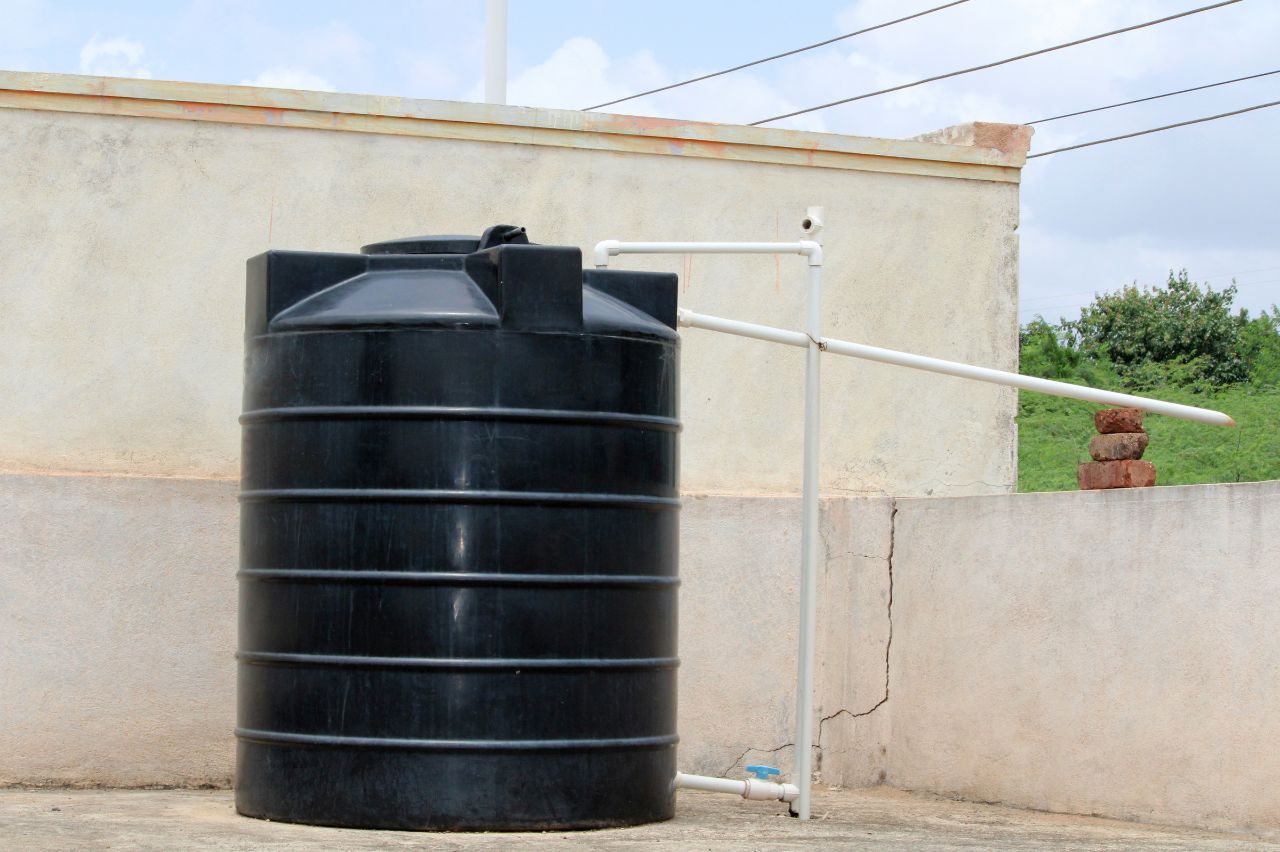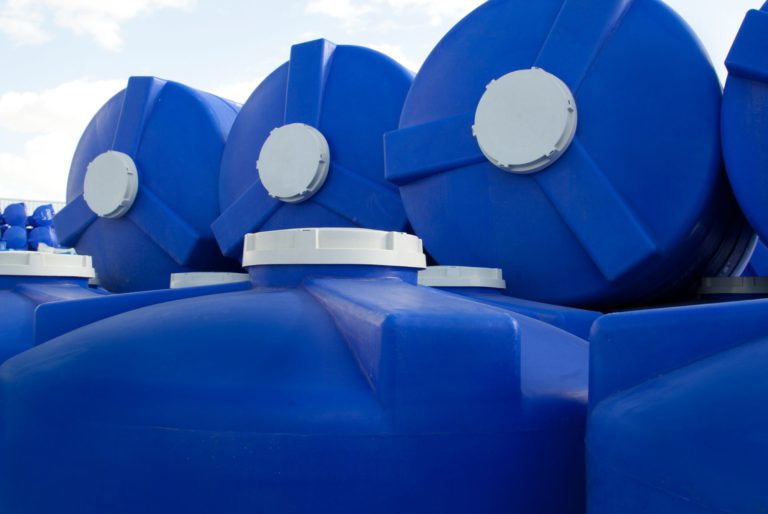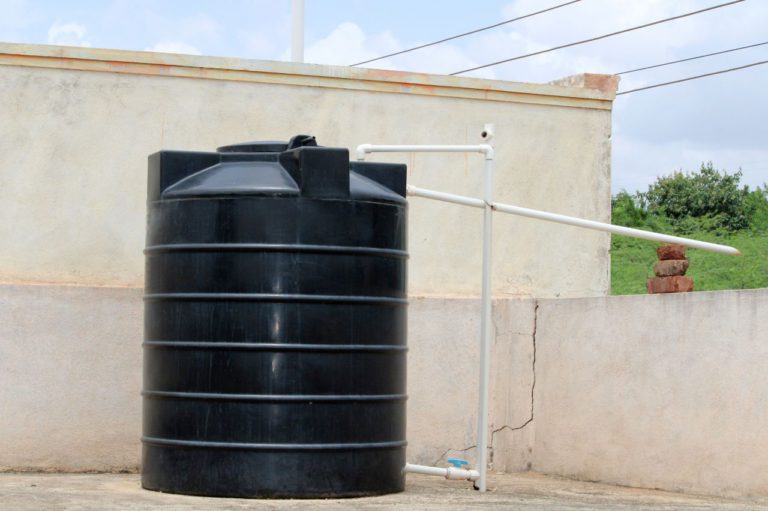The Reason Behind Water Tanks Being Black
Ensuring a reliable water supply is crucial for both residential and commercial properties. Water storage tanks play a vital role in providing a buffer against water shortages, emergencies, and fluctuations in water demand. These tanks serve as a crucial component of a property’s water management system, ensuring that there is a consistent and readily available supply of water, even during times of high usage or disruptions in the main water supply.
In many regions, the availability of water can be unpredictable, with periods of abundance followed by periods of scarcity. Water storage tanks help to mitigate the impact of these fluctuations, allowing property owners to store water during times of plenty and draw upon it during times of need. This not only ensures a continuous water supply but also helps to reduce the strain on the local water infrastructure, which can be particularly important during times of drought or other water-related emergencies.
Moreover, water storage tanks can play a crucial role in emergency preparedness. In the event of a natural disaster or other emergency that disrupts the main water supply, these tanks can provide a vital source of water for essential needs, such as drinking, sanitation, and firefighting. By having a reliable and accessible water supply on-site, property owners can better protect their assets and ensure the safety and well-being of their occupants.
Key Takeaways
- Water storage tanks are crucial for storing and supplying clean water for various purposes.
- The color of water tanks plays a significant role in their design and functionality.
- Black water tanks are effective in absorbing solar energy, which can help in heating water.
- Black tanks can also reduce algae growth and maintain temperature stability.
- Considerations for black water tank placement and the future of water tank design and color choices are important factors to consider.
The Role of Color in Water Tank Design
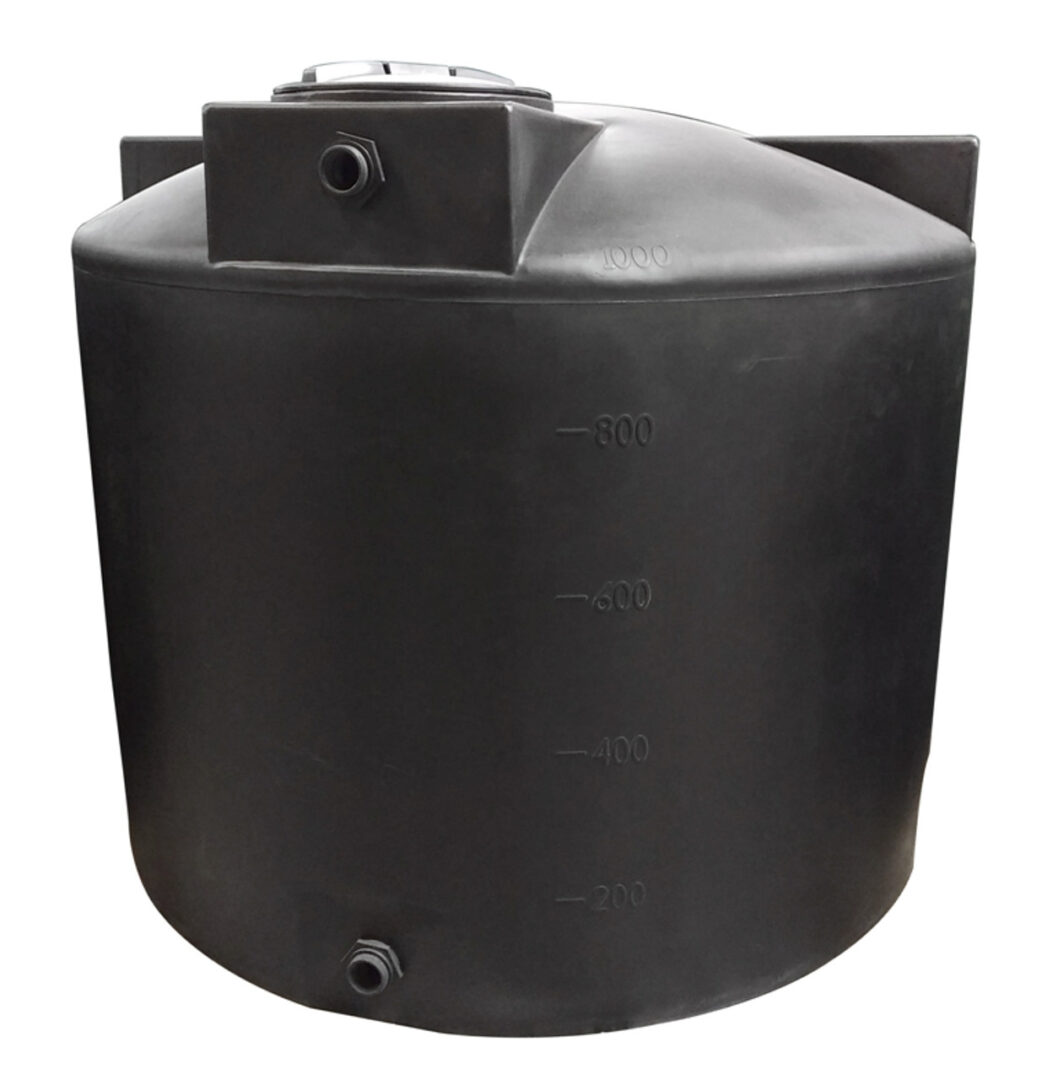
The color of a water storage tank is not just an aesthetic choice, but a crucial factor in its functionality. The selection of tank color can significantly impact the tank’s performance and efficiency, with far-reaching implications for the overall water management system.
One of the primary considerations in water tank color selection is the tank’s ability to absorb or reflect solar radiation. This property, known as absorptivity, is directly related to the color of the tank’s surface. Darker colors, such as black, have a higher absorptivity compared to lighter colors, allowing them to absorb more solar energy. This increased solar absorption can have a significant impact on the temperature of the stored water, which in turn can affect the tank’s overall performance and efficiency.
The choice of tank color also plays a role in the tank’s visibility and integration with the surrounding environment. In some cases, a more muted or camouflaged color may be preferred to blend the tank seamlessly into the landscape, while in other situations, a more vibrant or eye-catching color may be desirable for aesthetic or safety reasons. Ultimately, the selection of tank color should be a carefully considered decision that balances functional requirements, environmental considerations, and design preferences.
The Science of Solar Absorption
The ability of a surface to absorb solar radiation is known as its absorptivity. This property is a crucial factor in the performance and efficiency of water storage tanks, as it directly impacts the tank’s ability to harness the sun’s energy and maintain the temperature of the stored water.
Darker colors, such as black, have a higher absorptivity compared to lighter colors. This means that a black tank will absorb a greater amount of solar radiation, converting it into thermal energy that can be used to heat the stored water. In contrast, lighter colors, such as white or light gray, have a lower absorptivity and will reflect a larger portion of the incoming solar radiation, reducing the tank’s ability to absorb and retain heat.
The science behind this phenomenon is rooted in the way different materials interact with electromagnetic radiation, such as sunlight. Darker colors, like black, are more effective at absorbing a broader spectrum of wavelengths, including both visible and infrared light. This absorption of energy leads to an increase in the temperature of the tank’s surface, which in turn heats the water stored within.
By understanding the principles of solar absorption and the role of color in this process, water tank designers and engineers can make informed decisions about the most appropriate color choices for their specific applications. This knowledge can be leveraged to optimize the performance and efficiency of water storage systems, ultimately leading to improved water management and conservation efforts.
Maximizing Thermal Efficiency with Black Tanks
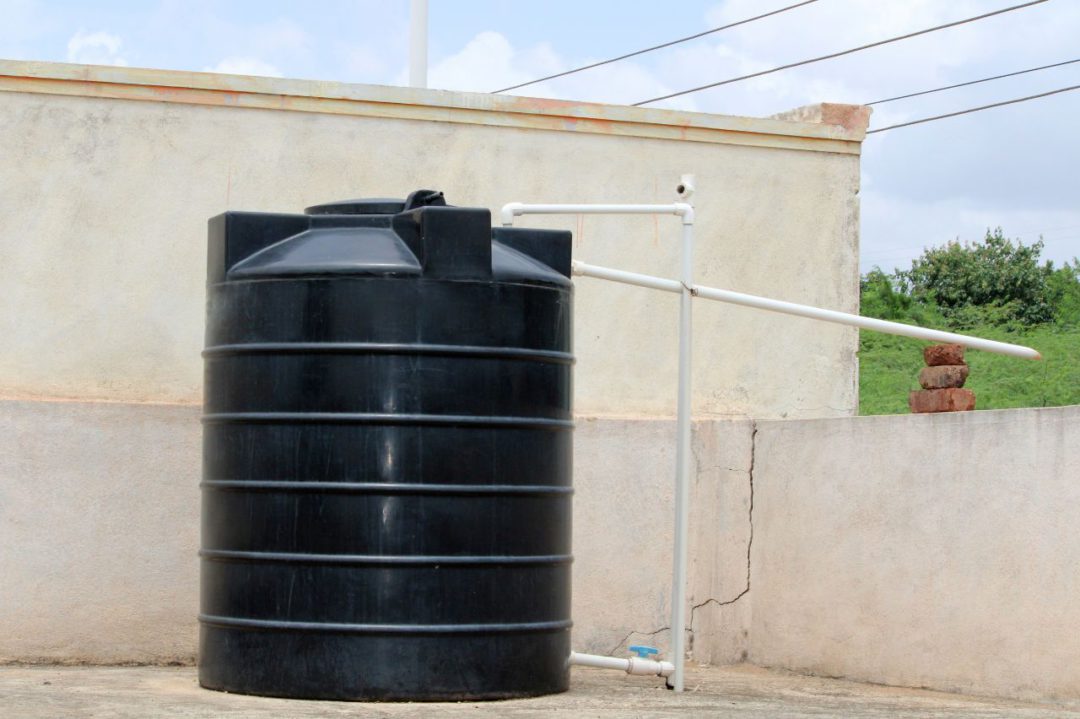
The increased solar absorption of black tanks helps to maintain the temperature of the stored water, leading to improved thermal efficiency and reduced energy costs for water heating. This thermal efficiency can be particularly beneficial in applications where the stored water needs to be heated or maintained at a specific temperature, such as in residential or commercial hot water systems.
By absorbing more solar energy, black tanks can help to reduce the amount of supplementary heating required to maintain the desired water temperature. This can translate into significant energy savings, as the tank’s ability to harness the sun’s energy reduces the reliance on traditional heating methods, such as electric or gas-powered water heaters.
Moreover, the thermal stability provided by black tanks can also improve the overall performance and longevity of the water storage system. By maintaining a more consistent water temperature, the tank can help to minimize the stress and wear on associated components, such as pumps, valves, and piping. This can lead to reduced maintenance requirements and a longer lifespan for the entire water management system.
In addition to the energy and cost savings, the thermal efficiency of black tanks can also contribute to improved sustainability and environmental stewardship. By reducing the need for energy-intensive water heating, these tanks can help to lower the carbon footprint and greenhouse gas emissions associated with water management, aligning with the growing emphasis on sustainable practices in the built environment.
Reducing Algae Growth in Black Water Tanks
| Reason | Explanation |
|---|---|
| Heat Absorption | Black color absorbs more heat from the sun, helping to keep the water inside the tank warm. |
| Algae Prevention | Black color reduces light penetration, which helps prevent algae growth inside the tank. |
| UV Protection | Black color provides better protection against UV rays, extending the life of the tank. |
Algae growth can be a common problem in water storage tanks, leading to water quality issues and maintenance challenges. The dark color of black tanks helps to limit the amount of sunlight that reaches the water, inhibiting the growth of algae and maintaining the purity and clarity of the stored water.
Algae thrive in environments with ample sunlight and nutrients, and water storage tanks can provide an ideal habitat for their proliferation. This can result in the formation of unsightly green or brown algal blooms, which can not only compromise the aesthetic appeal of the water but also introduce potential health and safety concerns.
By using black tanks, the amount of sunlight that penetrates the water is significantly reduced, creating a less favorable environment for algae growth. This helps to maintain the water quality and minimize the need for frequent cleaning and treatment to remove algal buildup. The reduced algae growth also helps to preserve the integrity of the tank’s internal components, such as pipes and valves, reducing the risk of clogging and other operational issues.
Furthermore, the suppression of algae growth in black tanks can have broader environmental benefits. Algal blooms can contribute to the depletion of dissolved oxygen in water bodies, leading to the degradation of aquatic ecosystems. By limiting the growth of algae in water storage tanks, black tanks can help to mitigate this environmental impact and support the overall health of local water resources.
Maintaining Temperature Stability with Black Tanks

The thermal properties of black tanks help to stabilize the temperature of the stored water, reducing fluctuations and ensuring a consistent supply of water at the desired temperature. This temperature stability can be particularly beneficial in areas with extreme weather conditions, where the water supply may be subject to significant temperature variations throughout the year.
By absorbing and retaining solar energy, black tanks can help to maintain the water temperature, even during periods of extreme heat or cold. This temperature stability can be crucial in applications where the stored water needs to be maintained within a specific temperature range, such as in residential or commercial hot water systems, agricultural irrigation, or industrial processes.
The consistent water temperature provided by black tanks can also contribute to improved energy efficiency and cost savings. When the water temperature remains stable, the need for supplementary heating or cooling is reduced, as the tank’s thermal properties help to maintain the desired temperature. This can lead to lower energy consumption and reduced operating costs for the overall water management system.
Moreover, the temperature stability of black tanks can have positive implications for water quality and system longevity. Fluctuations in water temperature can promote the growth of harmful microorganisms, such as bacteria and algae, which can compromise the water’s purity and lead to maintenance issues. By maintaining a consistent water temperature, black tanks can help to inhibit the proliferation of these problematic organisms, ensuring a safer and more reliable water supply.
The Benefits of Black Water Tanks in Cold Climates
In cold climates, the thermal properties of black tanks can help to prevent the water from freezing, ensuring a continuous and reliable water supply even during the winter months. By absorbing and retaining solar energy, black tanks can maintain the water temperature, even in the face of freezing temperatures and harsh winter conditions.
The ability of black tanks to prevent water from freezing can be particularly valuable in areas where the water supply is vulnerable to the effects of cold weather. In these regions, the risk of pipes and other water system components freezing and bursting can be a significant concern, leading to costly repairs and potential water shortages.
By using black tanks, property owners and water management professionals can mitigate the impact of cold weather on their water supply. The tanks’ thermal properties help to insulate the stored water, preventing it from freezing and ensuring that it remains available for essential uses, such as drinking, sanitation, and fire suppression.
Furthermore, the prevention of water freezing in black tanks can also contribute to improved energy efficiency and cost savings. When the water remains in a liquid state, the need for energy-intensive heating or thawing processes is reduced, as the tank’s thermal properties help to maintain the desired water temperature. This can lead to lower energy consumption and reduced operating costs for the overall water management system.
Considerations for Black Water Tank Placement
The placement of a black water tank can impact its effectiveness in absorbing solar energy and maintaining the temperature of the stored water. Factors such as orientation, shading, and surrounding structures should be carefully considered to maximize the tank’s performance.
Orientation is a crucial factor in the placement of a black water tank. Ideally, the tank should be positioned to maximize its exposure to direct sunlight throughout the day. This typically means orienting the tank to face south (in the Northern Hemisphere) or north (in the Southern Hemisphere), ensuring that it receives the maximum amount of solar radiation.
In addition to orientation, the presence of shading from nearby structures or vegetation can also impact the tank’s ability to absorb solar energy. Careful consideration should be given to the placement of the tank, ensuring that it is not obstructed by buildings, trees, or other objects that could cast shadows and reduce the tank’s exposure to sunlight.
The surrounding environment and structures can also influence the tank’s thermal performance. For example, placing a black water tank in close proximity to a dark-colored building or surface can create a heat island effect, where the tank’s absorbed solar energy is amplified by the heat radiating from the nearby structures. Conversely, positioning the tank near light-colored or reflective surfaces can help to mitigate the absorption of excessive heat.
By carefully considering these placement factors, water management professionals can optimize the performance of black water tanks, ensuring that they are able to effectively harness the sun’s energy and maintain the desired water temperature, regardless of the local climate and environmental conditions.
The Future of Water Tank Design and Color Choices
As water conservation and sustainability become increasingly important, the design and color of water storage tanks will continue to evolve to meet the growing demand for efficient and environmentally-friendly water management solutions.
In the coming years, we may see the emergence of innovative materials and technologies that further enhance the capabilities of water storage tanks. For example, the development of advanced coatings or surface treatments could improve the tanks’ ability to absorb or reflect solar radiation, leading to even greater thermal efficiency and temperature stability.
Additionally, the color choices for water tanks may expand beyond the traditional black and white options, with the introduction of more diverse and specialized hues. These color choices may be driven by a range of factors, including aesthetic preferences, environmental considerations, and the specific needs of the water management application.
One potential area of innovation could be the use of color-changing or thermochromic materials in water tank design. These materials could automatically adjust the tank’s color based on environmental conditions, optimizing the absorption or reflection of solar energy to maintain the desired water temperature and minimize energy consumption.
Furthermore, the integration of smart technologies and sensors into water tank systems could provide valuable data and insights to help optimize their performance and efficiency. This could include features such as real-time monitoring of water temperature, automated control systems, and predictive maintenance algorithms to ensure the tanks are operating at their full potential.
As the world continues to grapple with the challenges of water scarcity and the need for sustainable water management, the design and color choices of water storage tanks will play an increasingly important role in shaping the future of this critical infrastructure. By leveraging the latest advancements in materials, technology, and design, water management professionals can work towards creating more efficient, resilient, and environmentally-friendly water storage solutions that meet the evolving needs of communities around the globe.

